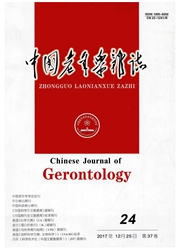

 中文摘要:
中文摘要:
目的研究衰老血管内皮细胞的功能和S1P2受体表达的相关性。方法采用RT-PCR和Western印迹检测年轻、中年和衰老内皮细胞的S1P2受体的表达;运用细胞跨膜迁移实验分析内皮细胞的趋化性,以及采用种植在Matrigel胶上的内皮细胞的形态发生实验,评价内皮细胞体外血管新生反应。结果S1P2受体在衰老内皮细胞中的表达显著上调(P〈0.05);S1P刺激能增加内皮细胞的迁移,但衰老组迁移率明显低于其他组(P〈0.05);Matrigel种植方法评价内皮细胞体外血管生成实验显示,S1P能刺激内皮细胞形成管状样结构,且衰老内皮细胞形成管状样结构的能力明显减弱(P〈0.05)。结论S1P通过S2P2受体介导而影响内皮细胞的功能,且衰老内皮细胞的S1P2受体表达上调与内皮细胞迁移及血管生成能力等功能下调改变相关联。
 英文摘要:
英文摘要:
Objective To investigate the correlation between S1P2 receptor expression and functional changes in the ageing process of vascular endothelial cells (ECs). Methods The expression levels of S1 P2 receptor in young, intermediate and senescent ECs were detected by RT-PCR and Western blot. ECs chemotaxis was measured by the transmembrane migration assay. Matrigel morphogenesis assay was employed to assess in vitro angiogenic responses. Results The expression level of S1 P2 receptor was significantly up-regulated in senescent Ecs (P 〈 0. 05). The migration of ECs was increased by S1 P-stimulated, but the mobility of senescent ECs was decreased than those of other groups. ECs presented a tubular-like network by SIP-stimulated, and the chemotactic capability of senescent Ecs was significantly decreased ( P 〈 0. 05 ). Conclusions Up-regulation of S1P2 receptor expression is related to functional changes of migration and morphogenesis in senescent ECs.
 同期刊论文项目
同期刊论文项目
 同项目期刊论文
同项目期刊论文
 期刊信息
期刊信息
